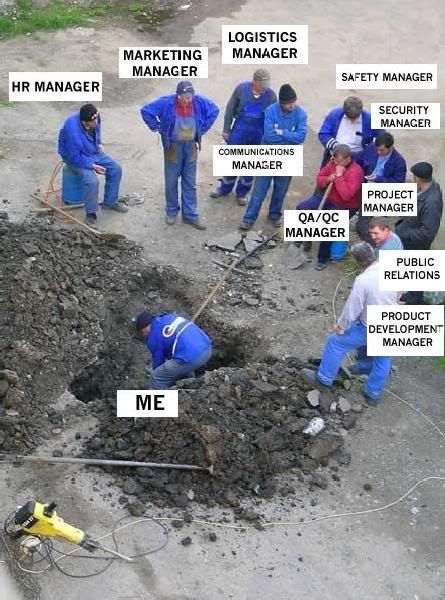
Posted on 12/24/2006 1:56:20 AM PST by SunkenCiv
Construction engineer John Tsikouras suspected that the salesmen were not telling him the whole story. The men from Newman Associates, a bolt distribution company, approached him in August 1999 and said they wanted his professional advice about a tunnel ceiling that was part of Boston's Big Dig. But Tsikouras said their questions seemed intended to get the Rhode Island engineer's approval rather than his expertise.
Would it be safe to hang the concrete ceiling from 7.5-inch-long bolts? No, Tsikouras said. What if the bolts were 5 inches long instead? "I can ask my mother that one," he replied: Even less safe, obviously. Then, the firm that designed the ceiling sent word through Newman that the ceiling would be far lighter than Tsikouras estimated. Would the bolts be strong enough then? Yes, Tsikouras replied, after making more calculations, "the bolts passed with flying colors."
(Excerpt) Read more at boston.com ...
"the length of the bolt should not make any difference as far as i can tell."
So then size doesn't matter.
It is scary that with all the money spent on this, that somebody would feel the need to cut costs. That's Billion with a B, folks.
I do work at a Department of transportation (Mississippi). That looks like a job a District Maintenance paint-striping crew would do. I have had all kinds of problems with contractors, and my share of arguments and Mexican standoffs with them, but even the worst private contractor is far better at road-building than your average Highway Department crew.
I am so proud to be a member of this forum!
Would you say that one and a half times the bolt diameter would suffice for embedment in concrete with epoxy bonding?
Of couse not. Obviously, bolt length is a factor in such a design.
All the stress that the bolt is holding has to go thru the first "length" of 1.5 * dia. this is comparable to the weakest link in a chain. If the first length can not do the job, you have the wrong bolt. It really does not matter if the bolt was one mile long.
"Cheaper, faster path led to failure [ Big Dig ]"
It seems like every single new weapon system program manager that shows up at the pentagon has memorized the mantra "Better, Faster, Cheaper." And we all know how famously some of those programs have succeeded.
One wag in my office has a triangle on his whiteboard with each side labelled better, faster, and cheaper. His tagline says" You can pick any two sides; some programs give you only one."
You can do it right, or you can do it over.
TC
LOL... the original explanation of the bolting apparatus they gave to the press sounded like it was for the absurdity of 'asthetics'. But this proves once again that careers... and money... beat out a human life every time.
Section of ceiling tumbles in tunnel (Boston Big Dig I-90/I-93, One Dead)
There are people at all three levels, local, state and federal, who need to be held to account for this.
US taxpayers should get a refund from the State of Massasschusetts. How much did the federal guvment spend on this thing, Kennedy's Hole, $15 billion?
According to your reasoning then, a one inch bolt embedded one and one half inches into concrete would be capable of holding the full tensile strength of the bolt.
Were you on the Big Dig design team?
"I would have specified steel embedments in the concrete above...and steel embedments in the concrete panels and then specified that a certified welder weld the two together in the field."
How much field experience do you have?
This system has been used for years to anchor heavy equipment to FLOORS where there is relatively little tensile load on the joint and where you are assured that the epoxy is well contained while it sets up.
This would probably be the worst application for this type of a fastener in that a full bond could not be assured particularly given the field installation methods.
I cannot say what the design specification was in this application, but I would not feel comfortable with less than a 5X margin of safety (but then my supervisors have always deemed me to be conservative). Should one of them fail, the adjacent fasteners must take up the load. But given your description of the panel, it is more likely that several of the fasteners failed simultaneously over a period of time. I.e., a poorly designed application for a marginally installed product.
The failure was undoubtedly NOT in the bolt, rather in the epoxy attachment to the concrete. The 1.5X rule is valid for a threaded fastener into similar materials (steel into steel), but in this application, it does not apply.
You really need much more than 1.5X engagement when using epoxy to secure the fastener, and the bonding operation is very depentent on the quality of the application (operator dependent). Most critical applications require extensive validation testing to assure the bond process is peformed properly.
Do you comprehend how a chain is as strong as it's weakest link?
Have you ever thought about why nuts are only so thick? Bolts do their work in the first threads, once you are in the proper amount, you do not gain any more strength.
And to answer your stupid question, no I do not have anything to do with the Big Dig, except pay taxes.
Disclaimer: Opinions posted on Free Republic are those of the individual posters and do not necessarily represent the opinion of Free Republic or its management. All materials posted herein are protected by copyright law and the exemption for fair use of copyrighted works.